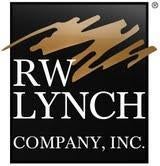Legal advertising is a relatively new concept. Practically prohibited in the United States until 1977, the Supreme Court case Bates v. State Bar of Arizona completely changed the notion – and legal standing – of attorney advertising on the basic concept that it would make legal services more accessible to the general public and improve the overall administration of justice.
However, this ruling was in deep contrast to longstanding legal tradition, where lawyers were not permitted to actively publicize their services – a position typically held by the organized bar. The basic premise was that a lawyer’s reputation and good work would lead to additional business, and that advertising would cheapen the legal profession.
Personal Injury Advertising: “Old School” Concerns
With the success of some print and television advertising campaigns in the late 1970’s, such as Jacoby & Meyers, many personal injury lawyers followed suit and began publicizing their services. The American Bar Association (ABA) was concerned that advertising personal injury cases on TV would adversely affect the legal profession’s image, and possibly lead to an increase in frivolous lawsuits.
In 1995, the American Bar Association released a comprehensive study of its member firms titled The impact of advertising on the image of lawyers: a mall intercept study. The study concluded that TV advertising actually helped bring legal services to low-income people that were not previously known or available. It also concluded that the image of personal injury lawyers was not tarnished.
However, even with the ABA study, there was some validity to the “old school” train of thought, as an increase in advertising and personal injury business attracted a significantly higher volume of personal injury attorneys looking to capitalize on the new personal injury gold rush.
Personal Injury Advertising: Barratry, Ambulance Chasers & Frivolous Lawsuits
Personal injury lawyers are familiar with a number of terms that have stigmas associated with them, such as ambulance chasers. However, these terms did not suddenly appear once the United States allowed lawyers to advertise. The term barrator commonly described corrupt individuals and ones who continually instigated prosecution based on groundless litigation, and it has been around for ages. In fact, in Dante Alighieri’s Inferno, written in the 14th century, he reserves the eighth circle of hell for barrators!
So how do personal injury lawyers dissociate themselves from this stigma, and ones that have been perpetrated by some attorneys on television and other advertising channels? It may not be as easy as one thinks. One of the quintessential cases used to depict frivolous lawsuits is known as the McDonald’s “Hot Coffee” Case. However, the case was a clear cut issue of negligence and misconduct, from McDonald’s previous knowledge – and settlements – of consumer risk for serious burns, to the third-degree burns and disabilities that the 79-year-old woman suffered. Regardless of public perception, warranted or not, the services of a personal injury lawyer are essential to maintain accountability within our legal system.
So how can personal injury lawyers change negative perception? Personal injury advertising is certainly not the cause, at least not specifically, as the ABA and others have shown that the general public wants to know where they can find lawyers to champion their claim when they are injured due to the negligence or misconduct of another party. So then maybe it is done case by case, fueled by the service that each personal injury lawyer provides to his or her clients.
Personal Injury Advertising: “Old School” Principles Today
What are “old school” principles and how do they apply today? “Old school” principles revolve around pride and respect. Pride and respect for the personal injury legal profession, pride and respect for helping people in need, and pride and respect for winning cases. Regardless of perception, the best personal injury attorney advertisement is the service provided for each client. So how does a personal injury lawyer with “old school” principles build a practice in an ultra competitive market where online search and digital advertising have revolutionized the legal profession?
Step 1: The first step is to keep doing what you are doing. While the landscape is changing, word-of-mouth leads and referrals are still one of the most effective ways to grow a personal injury practice. As the old adage goes, the greatest form of compliment is a referral.
Step 2: The next step is to make sure you have a website that properly reflects the quality and service that you provide. A website is not an advertisement, it is a digital extension of the personal injury lawyer that you are, and it is a critical component of any lawyer’s practice.
Step 3: The third step is to start a blog or publish content that allows you to provide educational tools for people who are actively searching for information. Blogging is a form of expression that can help show the kind of personal injury lawyer you are and provide expert guidance in areas where you have subject matter expertise.
If you need to grow your practice quicker, it may be worth considering a personal injury lead generation firm. If you are trying to avoid the gimmicky nature of most personal injury lead generation companies, then you will want to search for a firm that is well-established, has a nationally recognized brand and provides exclusive leads. If you have “old school” principles, the proper lead generation firm can save you the time and effort of prospecting so you can focus on doing great work for your clients. And each client you help will be one more endorsement that you can keep for a lifetime.


 i
i

